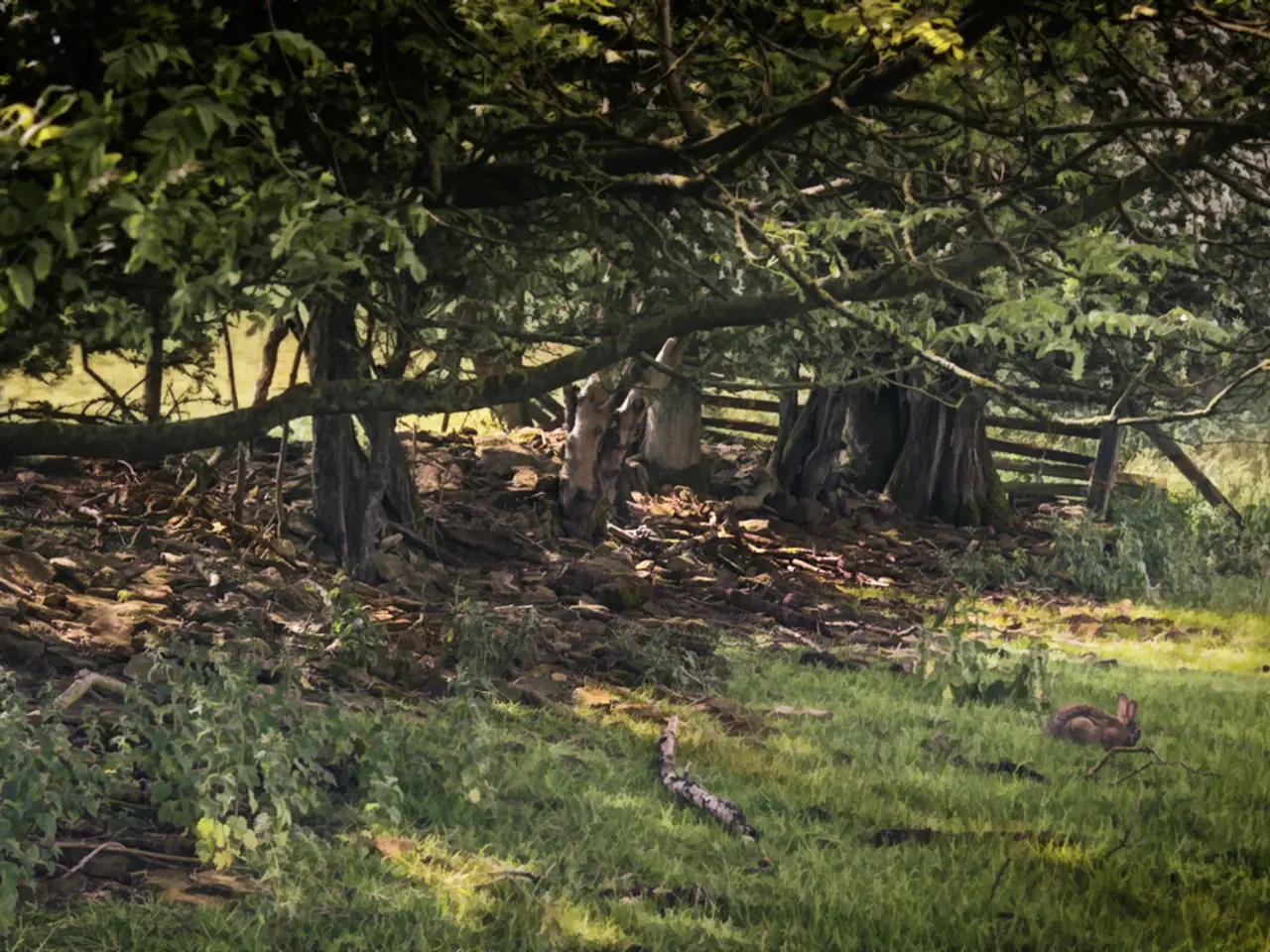Water poses a safety concern.
In the heart of Wolfsburg, Germany, the popular recreational area, the Allersee, is facing an unusual challenge. The rapid growth of two non-native aquatic plants, hornwort (Ceratophyllum spp.) and Canadian waterweed (Elodea canadensis), is causing concern among local authorities and water enthusiasts.
The Invading Plants
These plants are not typical for the Allersee and have immigrated in the last few decades. Silke Westphalen, managing director of the Aller-Ohre-Ise-Association, expressed her shock upon finding these plants in Wolfsburg.
The Impact
The problem in the Allersee's water is causing issues for sports, recreational activities, and nature. Swimming guests must expect restrictions due to the mowing work, and the spread of these plants is causing significant restrictions for swimming guests. The rapid growth could even lead to the complete disappearance of the regatta course.
Causes and Solutions
The causes behind this rapid growth are a combination of environmental and human factors. Elevated levels of nutrients, especially nitrogen and phosphorus, often from agricultural runoff, urban wastewater, or stormwater, stimulate excessive growth. Warmer water temperatures during the growing season can accelerate growth rates, while the lack of natural predators or competitors allows these invasive species to dominate. Stable water levels, clear water, and low flow conditions create ideal environments for these submerged plants to thrive. Canadian waterweed, an invasive species introduced to Europe, spreads easily via fragments, boats, or fishing gear, causing rapid colonization.
To address this issue, several potential solutions have been proposed. Nutrient management, mechanical removal, biological control, hydrological management, public awareness and prevention, long-term monitoring, and integrated management are some of the approaches being considered.
Current Measures
The mowing work is scheduled to continue until the end of August. Swimmers and water sports enthusiasts are urged to keep a safe distance from the mowing boat. The mowed material is initially stored near the DLRG tower on the shore. It's important to note that the Aller-Ohre-Ise-Association is not removing all aquatic plants, as they enrich the lake with oxygen and provide habitat for valuable small creatures and fish.
For more precise information about the condition of the Allersee, local environmental reports or management plans would provide detailed assessments and tailored interventions. The mild temperatures despite the storm also allowed the plants to thrive, highlighting the need for continued vigilance and proactive management.
The invasive species, such as hornwort and Canadian waterweed, originating from environmental-science fields outside of their native habitat, have infiltrated the Allersee, disrupting the lifestyle and sports activities within the area. Their rapid growth, stimulated by factors like nutrient-rich water, warmer temperatures, and lack of predators, poses threats to recreational swimming, water sports, and even the regatta course.







